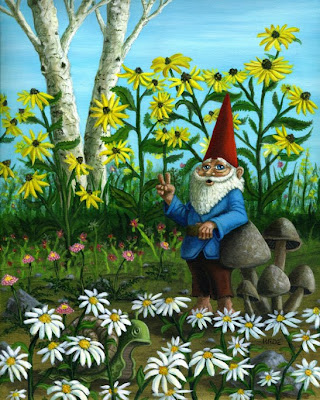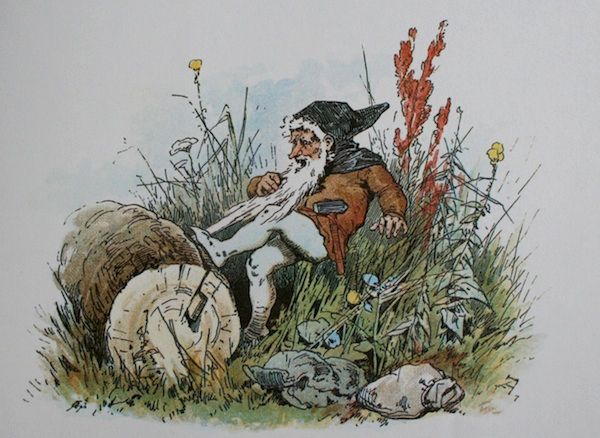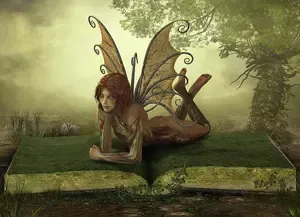- Home
- Fairy Blog
- Fairy Cakes
- Fairy Quotes
- Safety Dance
- The Flower Fairies Books
- What is a Fairy?
- Are Fairies Real?
- Elemental Fairies
- Faeries
- What are the Fae?
- Fae Fantasy Books
- Fairy History
- Origin of Fairies
- Fairies in Folklore
- Pixies
- Pixie Fairy Differences
- Gothic Fairies
- Tooth Fairy
- Fairy Festivals
- Fairy Gardens
- Fairy Garden Accessories
- Fairy Forests
- Fairy Poems
- Fairy Tales
- Fairy Tale Origins
- Classic Fairy Tales
- 24 Fairy Tales
- Fairy Tales around the World
- About Fantasy Creatures
- Dragons
- Dwarves
- Elves
- Gnomes
- Leprechauns
- Mermaids
- Unicorns
- Fairy Face Painting
- Free Fairy Art
- Fairy Coloring Pages
- Fairy Crafts For Kids
- Chinese Dragon Art
- How to Draw a Dragon
- Chinese Dragon Drawing
- Dragon Coloring Pages
- Fairy Tattoo Ideas
- About Us
- Contact Us
- Disclaimer
- Privacy Policy
History of Gnomes
History of Gnomes begins thousands of years ago in the lands of ancient Rome. There, folks believed in these charming creatures known as 'lares.' 'Lares' were like little guardian angels that protected homes and families. And, they knew how to party, often depicted as feasting and dancing. Who wouldn't want a party-loving protector at home?

The History of Gnomes
The Middle Ages: The Gnome Era Continues
Fast forward to the Middle Ages, gnomes were still stealing the spotlight. They found a home in the fairy tales and folklore of many European countries, from the 'Tomte' in Sweden to the 'Kabouter' in the Netherlands. Each culture spun its unique tale around these creatures, but the common threads were their love for nature, crafty hands, and knack for mischief.
Even the Greeks had a similar belief. Their version of gnomes were 'kobaloi,' playful tricksters who loved causing a bit of trouble for us humans. Picture tiny beings playing 'ding dong ditch' at midnight.
Up North, in Norse mythology, we find gnome cousins named dwarves and elves. These guys were miners and crafters and lived underground, not in the chilly cold but the cozy warmth of the earth. They also dabbled in magic, sometimes helping humans, and other times, well, let's just say they liked keeping things interesting!
Finally, although gnomes come from European stories, similar creatures are found in many different cultures around the world. From the Japanese Kodama to the Irish Leprechaun, gnome-like creatures appear in stories and traditions everywhere. So, you see, gnomes truly are a global phenomenon.
Gnomes Today: From Storybooks to Software
You might be wondering how these stories started. Well, the history of gnome tales is a bit mysterious. The term "gnome" was first used by a Swiss alchemist named Paracelsus in the 16th century, but similar creatures appear in many older myths and legends. Over time, people started sharing these stories far and wide, and the image of the gnome we know today started to take shape.
Gnome Magic: There are lots of exciting stories about gnomes. Some say they can change their size or even their appearance, which helps them hide or play tricks on people. They're known to celebrate with grand feasts, especially on Christmas Eve in some Scandinavian countries, where they are called "tomte" or "nisse." Gnomes are clever and like to challenge humans with tricky riddles, but if you're not respectful, you might end up with a gnome's curse, causing you a string of bad luck!
The classic look we associate with gnomes today – short, bearded, pointy hats and all - didn't come into vogue until the 19th century, thanks to the popular garden gnome statues. Starting in Germany and spreading all over Europe, these little figurines brought gnome legends to life and were thought to bring good luck and protection. Now, wouldn't you want one in your backyard?
Gnomes have also stepped out of these old tales and become part of our modern world. They appear in popular books like "Harry Potter" and movies like "Gnomeo & Juliet." In the world of video games, gnomes are often shown as smart, curious characters with a knack for magic. And you've probably seen garden gnome statues, right? These decorations come from a tradition that started in Germany in the 19th century. People believe that having a gnome in your garden can bring good luck and protect your home from harm.
You might also be surprised to know that "gnomes" aren't just mythical creatures. There's something called GNOME in the world of computers too! It's a free and open-source desktop environment that helps people use their computers more easily. It's another example of how gnomes have inspired our world.
Whether they're helping people, playing pranks, or even making our computers easier to use, gnomes have become a special part of our lives. They remind us of the magic and mystery in the world and encourage us to respect nature and have a good sense of humor. So next time you see a gnome, whether in a book, movie, or even in your garden, remember the rich and magical history these fascinating creatures carry with them.

Thats Our Story on Gnomes
So, that's it! These fascinating creatures, small in size but big on personality, have woven a rich tapestry of folklore and history around the world. They teach us about magic, mischief, and the wonders of nature. So next time you spot a gnome, in a book, a movie, or even your neighbor's garden, tip your hat to their remarkable history. And who knows, you might just earn yourself a little gnome magic!
Did you miss our page "What is a Gnome?" that tells you more about these little creatures.
Amazon Audible Promo
With Amazon Audible’s holiday promo ($0.99/month for 3 months) and the release of Harry Potter: The Full-Cast Audio Editions, there's never been a better time to join.
Book of the Month
The Best Selling Fae Fantasy Book! A great Christmas gift!
CLICK HERE for more information and best price!
Recent Articles
-
Fae Fantasy Books - where love can be both thrilling and terrifying!
Nov 22, 25 02:34 AM
Fae Fantasy Books - explore new aspects of what it means to be human in a world where magic and immortal beings exist! A perfect blend of danger and allure! -
Water Fairies: Meet the Mystical Undines of the Waters
Nov 19, 25 02:45 AM
Water fairies, often called undines, are enchanting magical beings deeply connected to the element of water. These spirits appear in folklore and fairy tales -
Earth fairies are elemental beings connected to the earth element.
Nov 19, 25 02:34 AM
Earth fairies, also known as gnomes, are elemental beings deeply connected to the earth element. They have rich roots in folklore, mythology, and fairy tales




